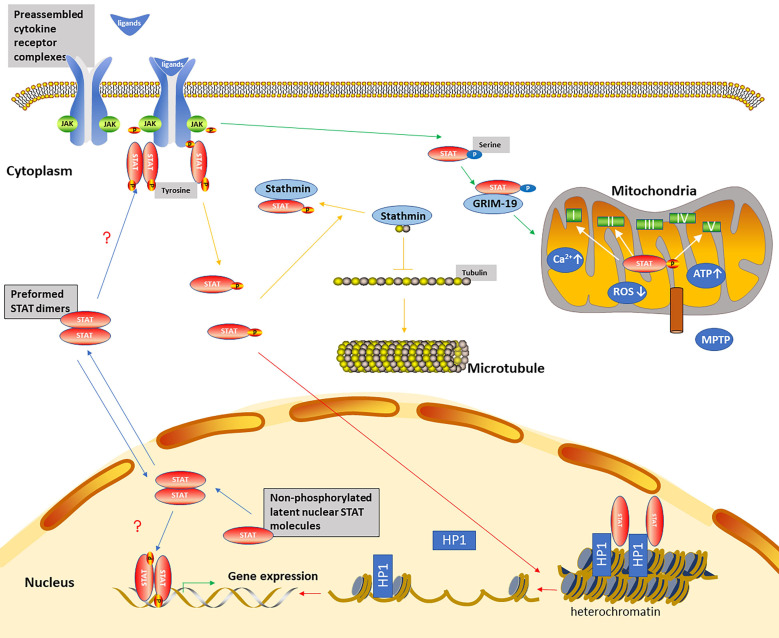Figure 2.
Non-canonical STAT signaling pathways. Non-canonical dynamics aspects (blue lines) include preassembled cytokine receptor complexes in the absence of ligands, preformed STAT dimers in the absence of the activating tyrosine, and non-phosphorylated latent nuclear STAT molecules consistently located in the nucleus. The question marks indicate that the mechanisms are unclear and still need to be further explored. Non-canonical functions include regulation of mitochondria (green lines), microtubule (yellow lines), and heterochromatin (red lines). Tyrosine phosphorylation of STATs promotes their serine phosphorylation. P-Ser-STAT3 is imported into mitochondria via GRIM-19. MitoStat3 promotes ATP synthesis, decreases ROS release, and increases mitochondrial Ca2+ and MPTP opening through regulating electron transport chains I, II, and V. Stathmin inhibits microtubule growth by binding tubulin dimers and sequestering tubulin, which decreases the concentration of free heterodimers available to polymerization. Phosphorylated STAT3 binding to stathmin inhibits its tubulin depolymerization activity. Unphosphorylated latent STAT binds to HP1 on heterochromatin in the nucleus. Phosphorylated STATs reduce the amount of unphosphorylated STAT localized on heterochromatin. HP1 disassociates from heterochromatin and leads to heterochromatin instability. Genes originally localized in heterochromatin are now accessible to STATs or other transcription factors.

